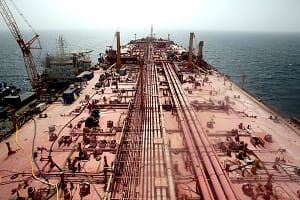Recently, oil prices have risen by over 1% at the beginning of the week, starting trading today, Wednesday, at $80.74 per barrel, after finding some technical support at the pivotal level of $80.73.
Prices may further increase due to supply and demand factors. Russia faces challenges due to sanctions and drone attacks from Ukraine on Russian refineries and storage facilities.
On the demand side, expectations of the Federal Reserve cutting interest rates three times this year, along with rate cuts in Europe, could stimulate the global economy, thus increasing oil demand.
Although the Fed has clearly announced its intention to cut interest rates three times this year, markets seem unconvinced of these expectations.
This week, the release of the Federal Reserve’s preferred inflation gauge, the Personal Consumption Expenditures (PCE) index, is scheduled for Friday, and an increase in inflation could cause chaos in markets preparing for another extension of production cuts from Saudi Arabia.
Recent data shows no upward trend in oil production, which has decreased to 13.1 million barrels per day in recent weeks after reaching a record level of 13.3 million in February.
From my perspective, this negativity from producers is seen as a signal for oil price increases, as economic stimulus in China and the healthy economy in India, both countries with the largest impact on demand, continue. Meanwhile, supply remains constrained by OPEC+ quotas.
However, oil price increases may be modest and slow until prices exceed $90. The oil’s ability to rise could attract the attention of markets and central bank governors alike, due to its potential impact on future monetary policy through consumer price figures at the end of this week.
Geopolitical challenges have escalated as Ukraine has increased drone strikes against Russian oil refineries, leading to an estimated halt of around 900,000 barrels per day of its production capacity. I believe the impact of these disruptions on crude oil prices is likely to be mixed, coinciding with a decrease in Chinese demand and a potential reduction in Russian oil exports.
Additionally, the Red Sea crisis has led to a buildup of 100 million barrels of oil in international waters, as shipping companies reroute trade flows to avoid attacks by Yemeni Houthis. This has contributed to an increase in crude oil prices by up to $4 per barrel due to larger-than-expected draws from commercial inventories.
In the end, attention will remain focused on US economic data and its impact on monetary policy, thereby affecting the movement of the dollar and, consequently, potentially controlling the entire market. Geopolitical challenges are equally important as other fundamental factors, as any progress in ceasefire talks in Gaza could calm the prevailing market fears, while uncertainty and declining risk appetite among investors could lead to market fluctuations.






Leave a Comment